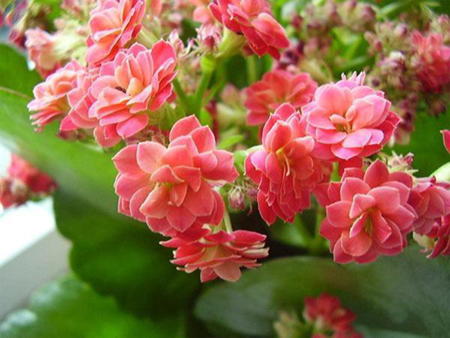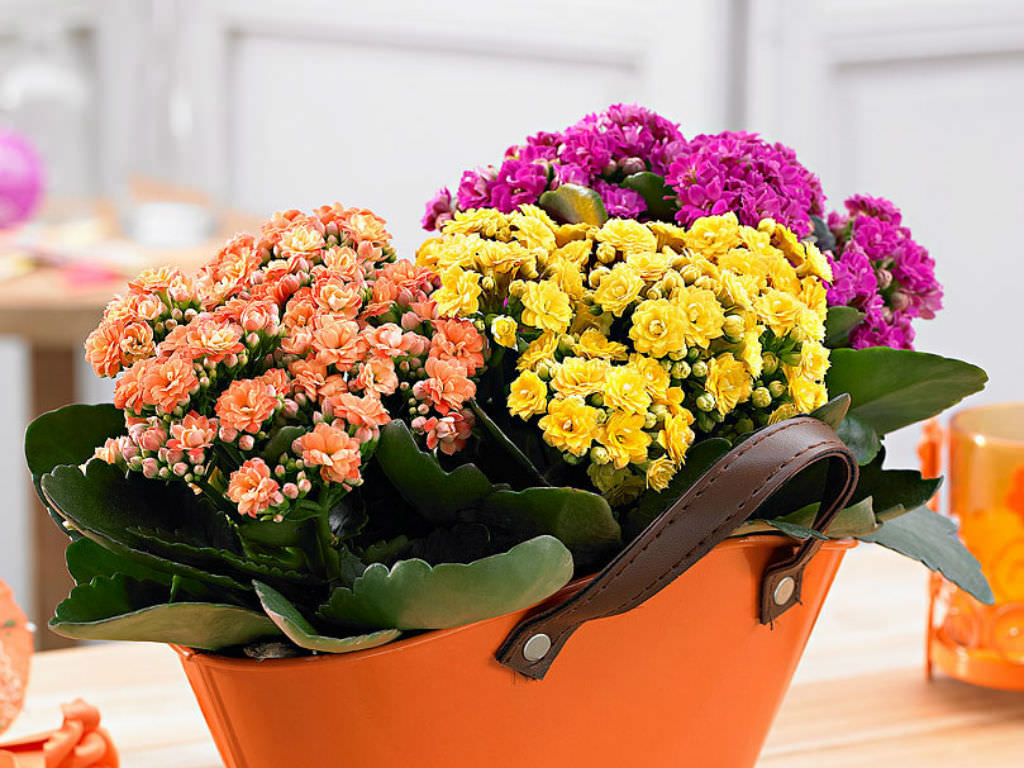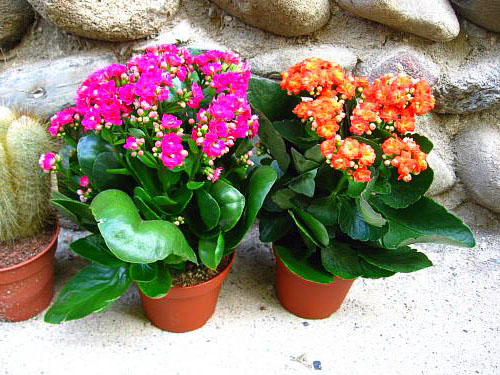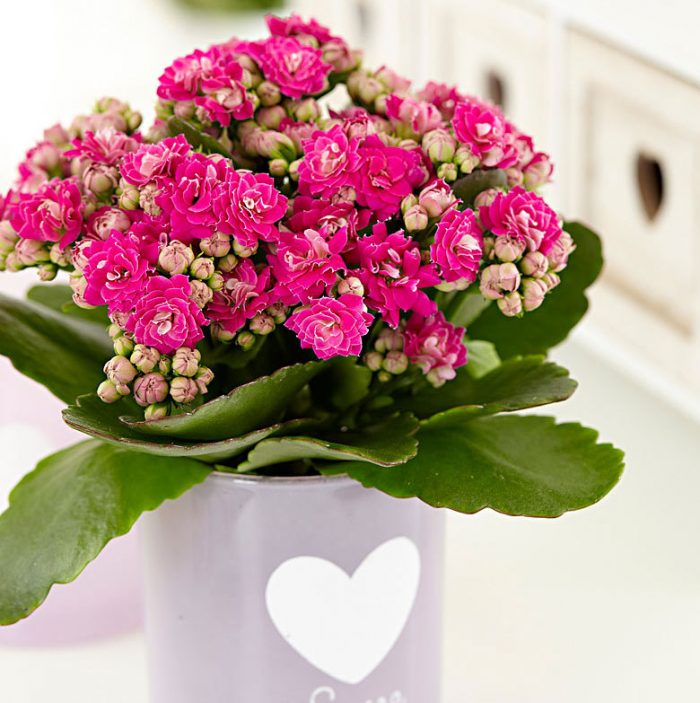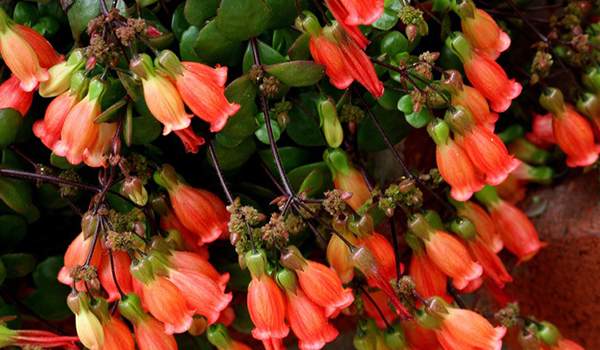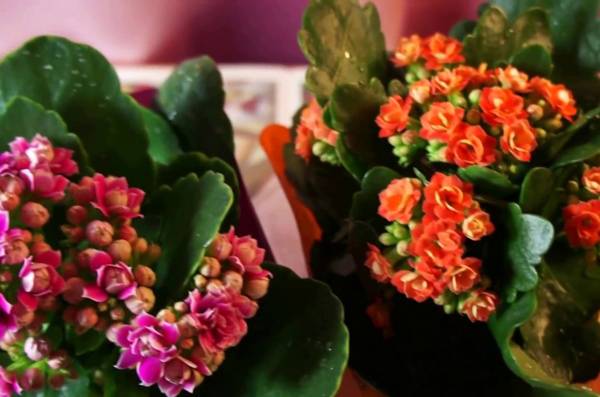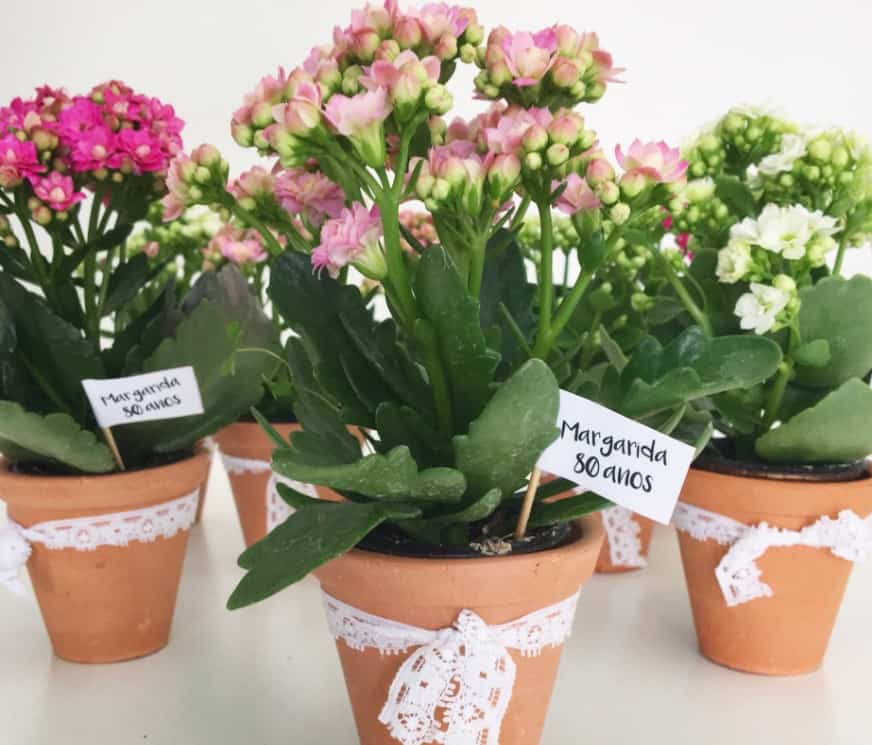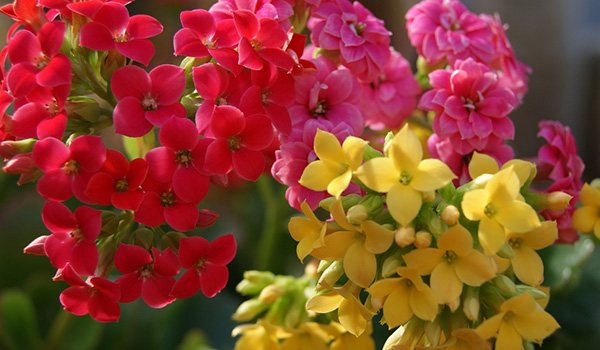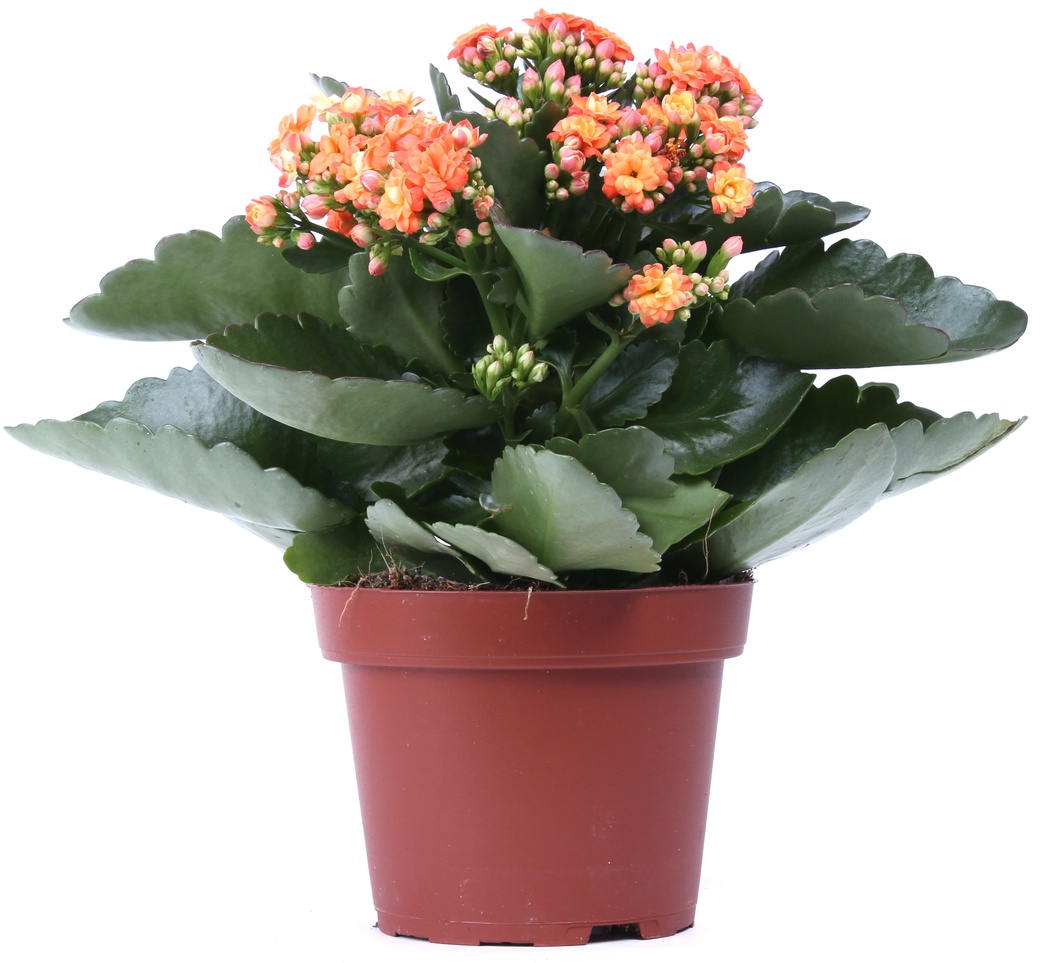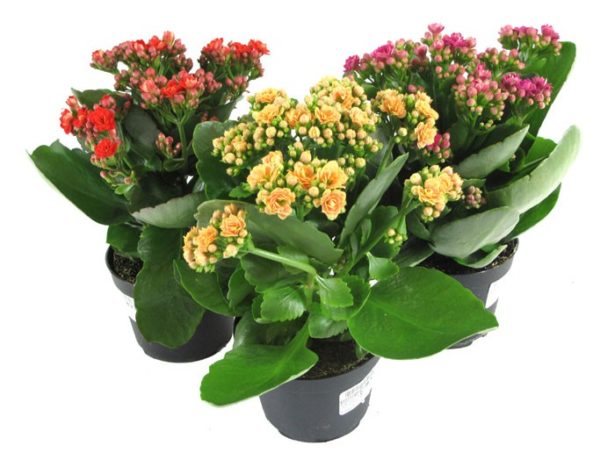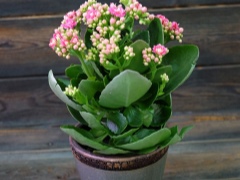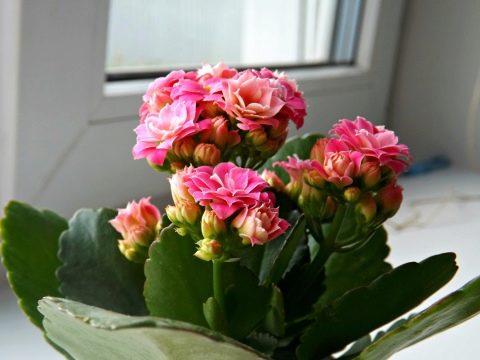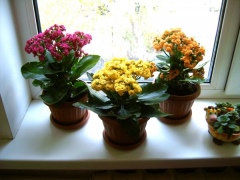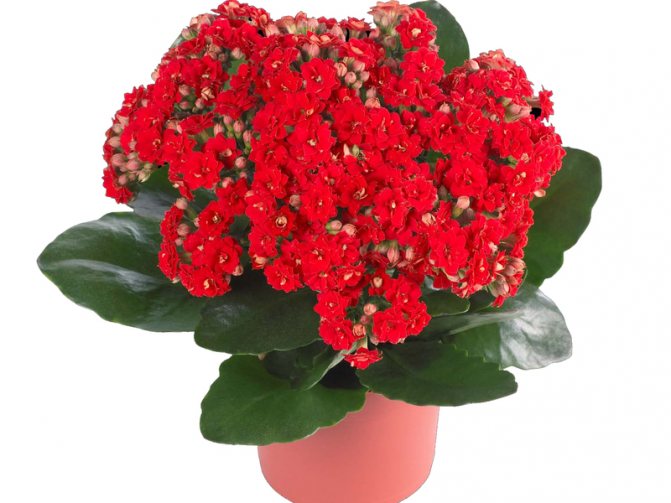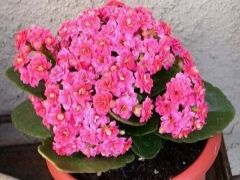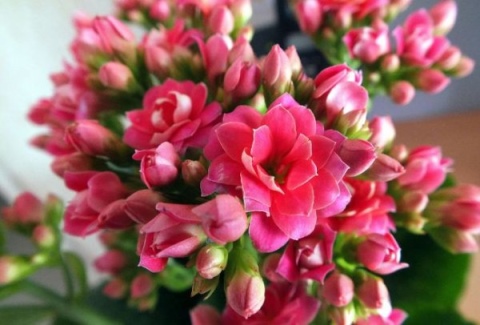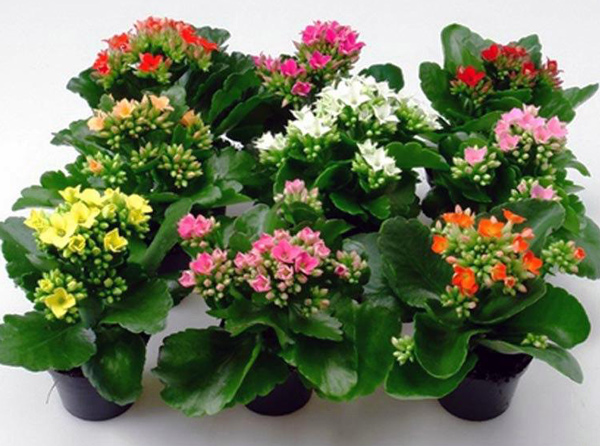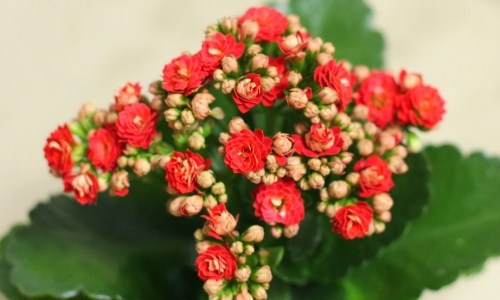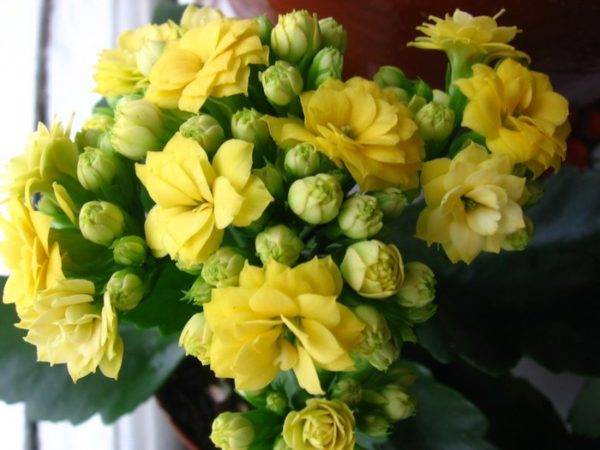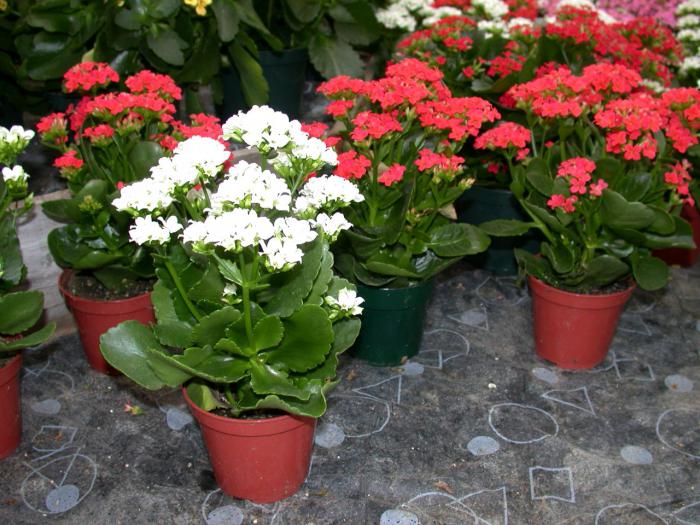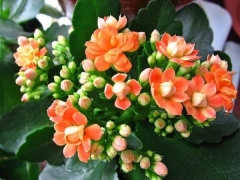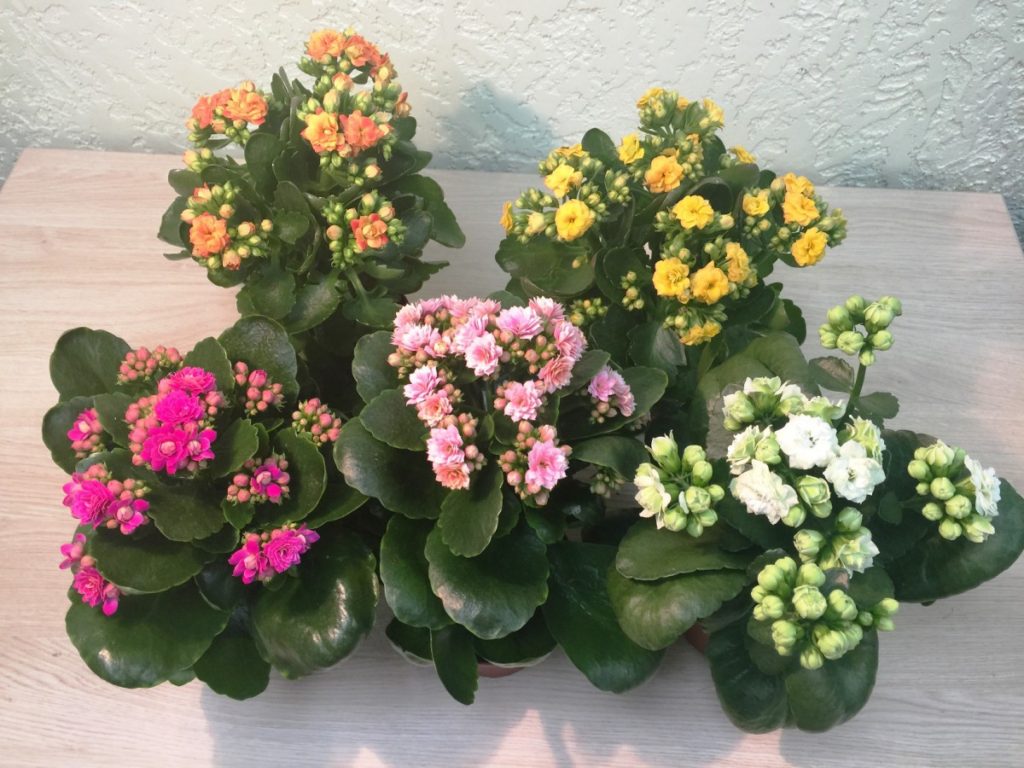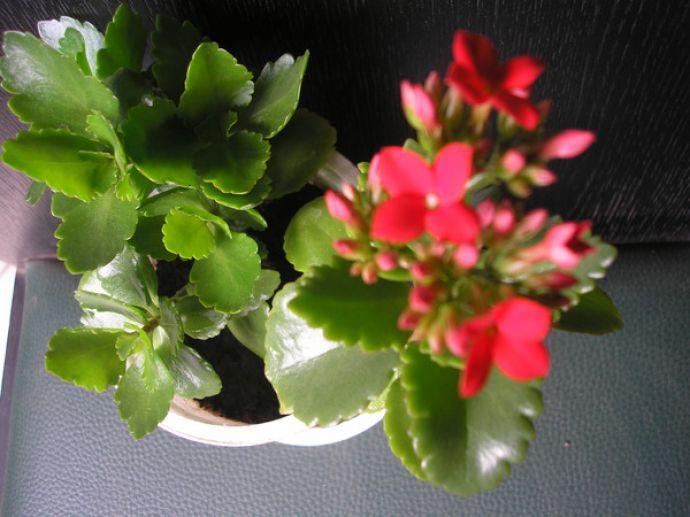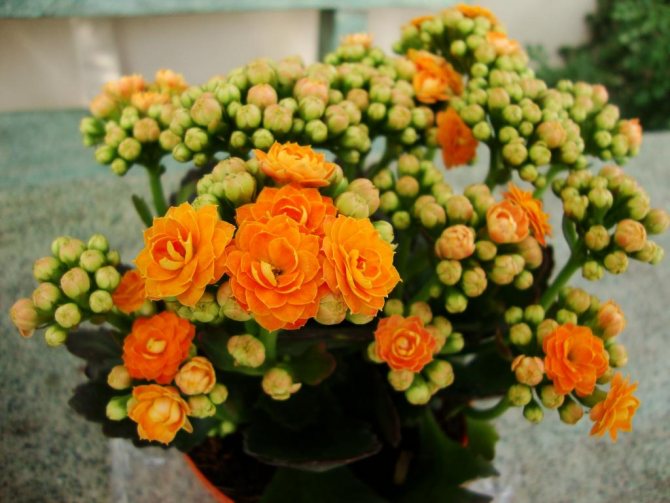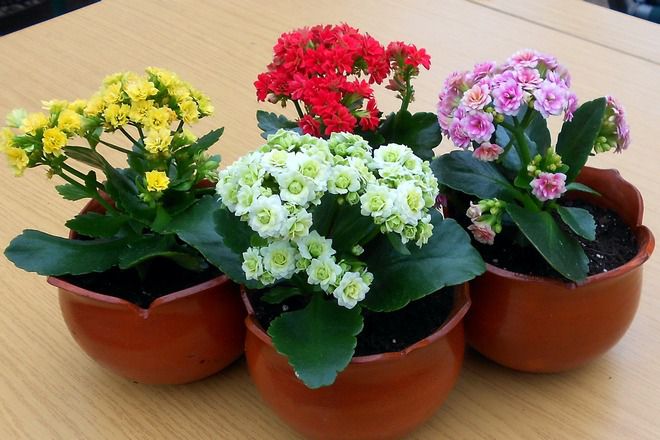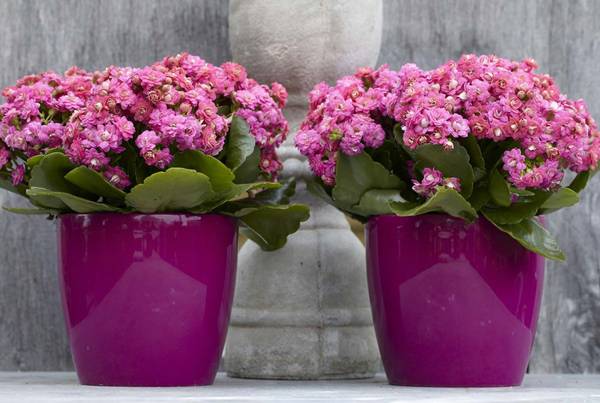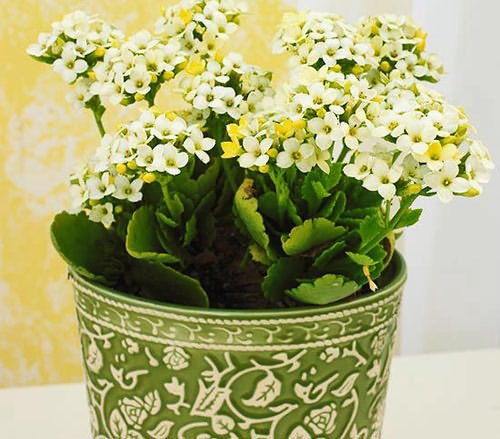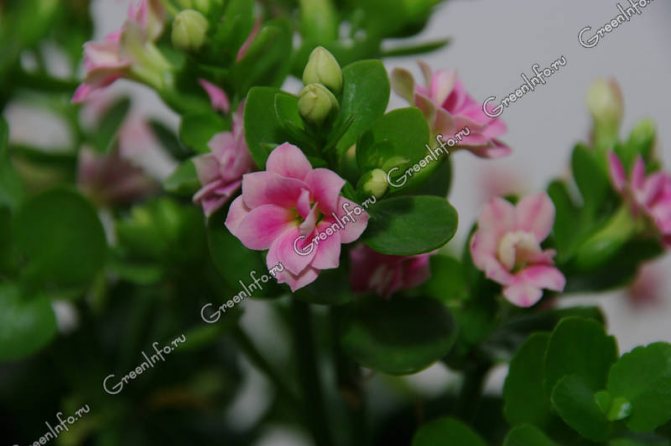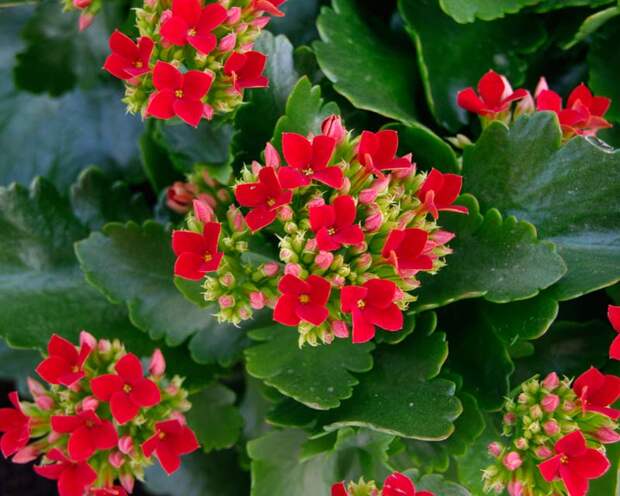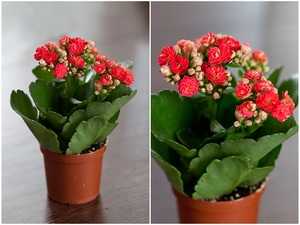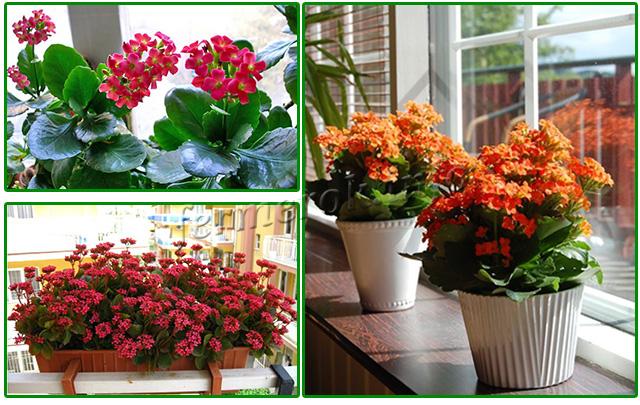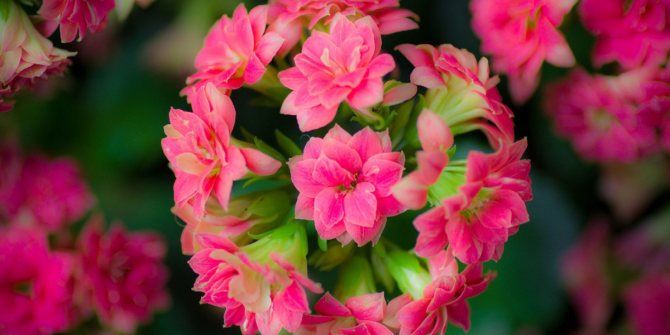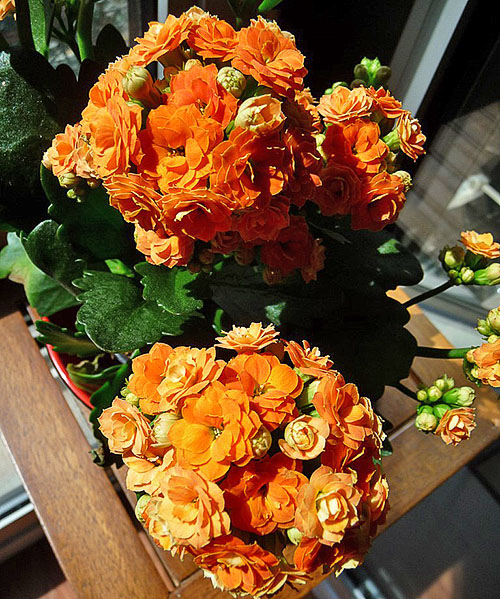3 Recommendations
If Kalanchoe Kalandiva is an unpretentious plant, this does not mean that it does not require care at all.
It is very important to pay attention to this flower.
Don't forget about watering. It should be moderate but regular. It is recommended to use water that has already settled. It should be at room temperature. Watering in hot weather is carried out every 3-4 days. The next watering procedure should take place when the top layer of the substrate dries up a couple of centimeters in depth. Waterlogging of the soil should not be allowed, as this will lead to rotting of the roots. In winter, watering the plant is enough once every 1.5-2 weeks. Be sure to monitor the condition of the foliage. If it loses its tone, becomes lethargic, then it is recommended to water the flower.

Fertilization is another important aspect. Experts advise using ready-made complex fertilizers that are suitable for succulents and cacti.
But organic matter should in no case be used, since the nitrogen that is present in it will increase the intensity of the formation of foliage and shoots, so that flowering will never come - the flower simply will not have the strength to do it.
It is supposed to prepare a solution for feeding strictly according to the instructions for fertilization. Watering a flower with such a solution should be 1-2 times a month and only during the growing season. No feeding is required during the resting phase.

Reproduction
Another extremely important nuance in the care of Kalanchoe "Kalandiva" is reproduction. It can be carried out through stem or leaf cuttings. Due to the fact that the plant branches well, there will definitely not be a shortage of planting material. The main thing is to choose a healthy and strong stalk.
Reproduction is carried out as follows.
- Using a sharp and sterile knife, it is necessary to cut off the upper part of the shoot (the optimal size is 5 centimeters) or a separate leaf. The injured area must be treated with cinnamon or activated carbon.
- Further, the cuttings obtained must be dried for at least 3 hours in the fresh air.
- Now you can prepare a container with moistened sand. Sections should be treated with "Zircon" or any other root stimulant.
- Cuttings should be planted in a 3-centimeter groove. Instead of soil, it is recommended to use water or a weak Epin solution. After that, the stalk can be placed in a glass, while removing the lower leaves. The liquid in the container must be changed at least once every two days.
- These cups should be placed in plastic bags, tied tightly. Such a "greenhouse" needs about 7 minutes of daily ventilation. The temperature should be 25-28 degrees above zero. The presence of diffused bright light is mandatory. If the substrate suddenly begins to dry out, you can safely use a spray bottle.
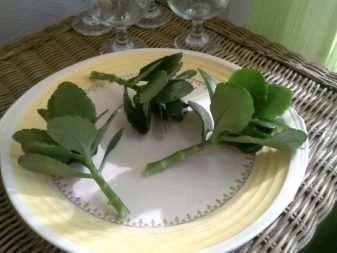
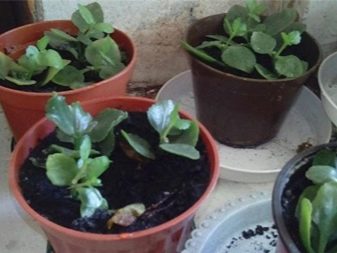
In exactly the same way, propagation by leaves can be carried out, however, in this case, the roots grow somewhat slower.
In addition to these two methods, there is also seed reproduction, but this option is not common among gardeners.
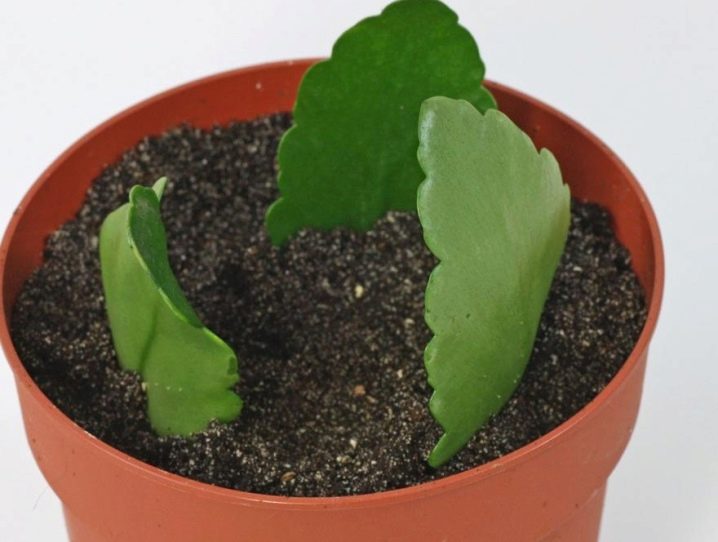
2 Transplant and reproduction
Usually, a transplant is carried out after buying a flower. Kalanchoe Kalandiva must be transplanted annually while it is still young - up to 3 years. It is better to carry out the procedure in the spring, as early as possible. As for adult, already formed plants, it will be enough to transplant them once every 3 years. During periods of rest and flowering, Kalanchoe should not be disturbed.

For all subsequent transplants, it is necessary to choose a pot whose diameter will be a couple of centimeters larger than the previous one. For an adult culture, containers with a diameter of 12-18 cm will be optimal.
It is necessary to select the correct soil. You can use a common substrate available from flower shops. Choose one that is suitable for succulents and cacti. Some people prefer to prepare their own soil. The requirements for it are simple
Only sufficient aeration and neutral acidity are important. You can mix 1 part of coarse river sand with 4 parts of universal soil
A mixture of leafy, turfy soil, sand and humus is perfect - take all in the same volumes. It is imperative to make a drainage layer at the bottom of the container.
The transplant procedure is as follows:
- 1. Water the flower and wait 10 minutes. Remove the Kalanchoe from the container along with the soil around the roots.
- 2. Place the flower in a new prepared container and sprinkle with soil. Tighten it a little.
- 3. Water the plant in moderation, and then rearrange it for 3 days in a place with partial shade. After that, return to its original place.
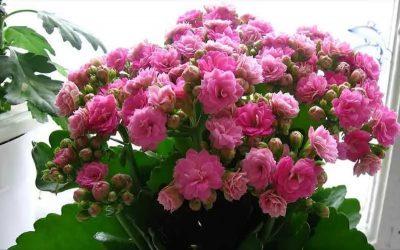
Further actions will be as follows:
- 1. Take a sharp knife, disinfect it and cut off the upper shoot. The length should be about 5 cm. Instead of a branch, you can only cut 1 leaf. Treat the cut sites with cinnamon, activated carbon or chalk.
- 2. Air dry the cutting for 4 hours.
- 3. In addition, sprinkle the place of the cut with a preparation that will stimulate the growth of roots. Kornevin will do.
- 4. Pour sand into the container and moisten it. Plant a stalk there, deepening by 2 cm. Cover with a transparent bag or glass to create a greenhouse effect. The light should be diffused. Open the stalk every day for 10 minutes. Moisten the substrate regularly.
- 5. You can keep the cutting not in sand, but in Epin's solution or even plain water. In the second case, it is supposed to change the fluid every few days.
Usually, the roots appear in 1.5-2 weeks. Then you can transplant the plant to a permanent place.
Pests and diseases
The causes of diseases in most cases are associated with improper crop care. Keeping a flower under conditions of short daylight hours or with constant shady placement leads to damage by powdery mildew, which manifests itself in the form of a white bloom, similar to grains of flour. Powdery mildew is a fungus, to combat which the culture is treated with liquid-soluble preparations - fungicides and the flower is sent to quarantine.
Staying Kalanchoe in cool conditions in a damp room or with flooded soil leads to the appearance of mold, phytophthora, and decay of the root system. As in the case of powdery mildew, the culture should be treated with a substance containing a fungicide, a complete replacement of the substrate with a new one, followed by treatment of the affected roots with the use of coal or healing agents.
Common Kalanchoe pests:
- mealybug;
- shield;
- aphid.
The scale insect is a small brown insect that feeds on plant sap. In the process of its vital activity, the surfaces of the flower are covered with a sticky transparent bloom, and the leaves and shoots are dotted with tiny bugs.
Aphids infect the plant in the warm summer, when the culture is placed near an open window or on a balcony. Insects are attracted by the nutrient soil. Signs of aphids:
- the inside of the leaf is covered with small white flying "butterflies";
- on leaf plates and shoots "wet" places are formed - traces of feeding of aphids.
The mealybug is an insect that looks like a scale insect, but with a white dusty back. It affects all ground parts of the plant, leaving behind a sugary discharge, on which a sooty fungus develops.
Prevention and treatment of a flower from pests consists in a systematic examination of the culture for the presence of strange spots, sticky zones, and moving insects. When an ailment is detected, Kalanchoe is treated with insecticidal preparations in several stages, and the earthen mixture is replaced.
The non-infectious diseases affecting the culture include dropsy.It occurs due to the content of the flower in cool conditions with simultaneous waterlogging of the soil. The leaf plates are covered with convex brown spots, similar to warts. To treat dropsy by replacing the soil and placing the culture in a warm, bright place. Watering needs to be adjusted.
Alkalization of the soil leads to deformation of young leaves, their poor growth and development, loss of color. The earth should be spilled with soft water with the addition of acidic substances, for example, a few drops of lemon juice per liter of liquid.
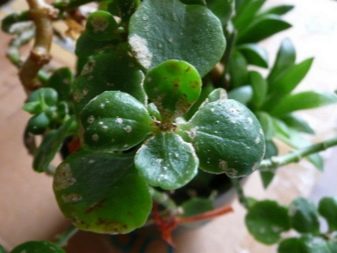

For tips on caring for Blossfeld's Kalanchoe, see the video below.
Flower features
You will not see this plant in the wild, since it was bred by breeders for growing at home. It looks like a compact bush with rather thick stems and fleshy leaves. Depending on the variety, they can be velvety and smooth.
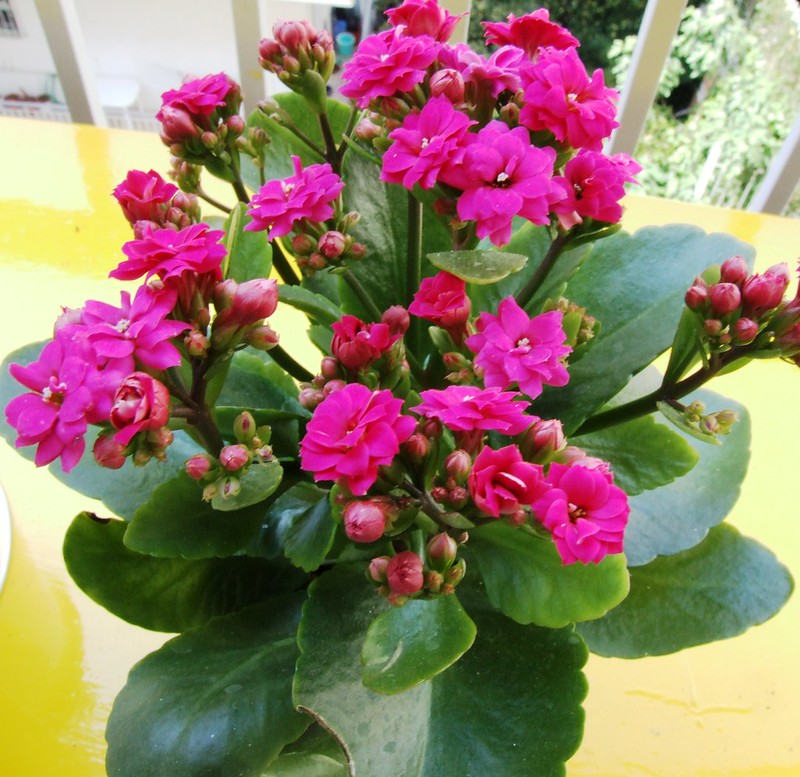
Usually the height of the plant reaches about 30 cm. And it blooms with small double flowers, collected in lush beautiful inflorescences. Their colors can also be different, depending on the variety of Kalanchoe Kalandiva. In the photo you can see the most popular home-grown plant varieties. The most colorful and spectacular among them is deservedly considered the kind of mix, which is a combination of several varieties with different colors.
The plant belongs to the succulent family, which means that it can accumulate liquid and various nutrients in its leaves and stems.
Reproduction
The Kalanchoe has all possible methods of reproduction, however, preference is given to vegetative reproduction.
Propagation by cuttings
Propagation by cuttings involves the use of either a large leaf or a stem with 2-3 leaves as a cutting. The stalk can be immediately rooted in almost any soil to a depth of about 2 cm by tilting it at a slight angle.
Sometimes ordinary sand is recommended as a soil, since the root system in it will develop faster.
In the case of using sand, the rooting depth should not exceed 1 cm. Regardless of the soil used, immediately after rooting, the cutting is watered with warm water and covered with a glass or plastic bottle for several days.
This approach allows you to create conditions for a young shoot, close to those of a greenhouse; rooting in them is faster.

Dried cuttings
Sometimes it is recommended to dry it at room temperature before settling the stem cuttings for 24 hours. In this case, after rooting, it is necessary not to cover the stalk, but to wrap the entire pot with the stalk with plastic wrap, after watering it.
Propagation by cuttings is best done in late May - early June.
Reproduction by "children"
In Kalanchoe pinnate and Degremon, many children are formed that can be used for reproduction.
Their advantage is that they already have a root system and they can be grown without any problems at all.
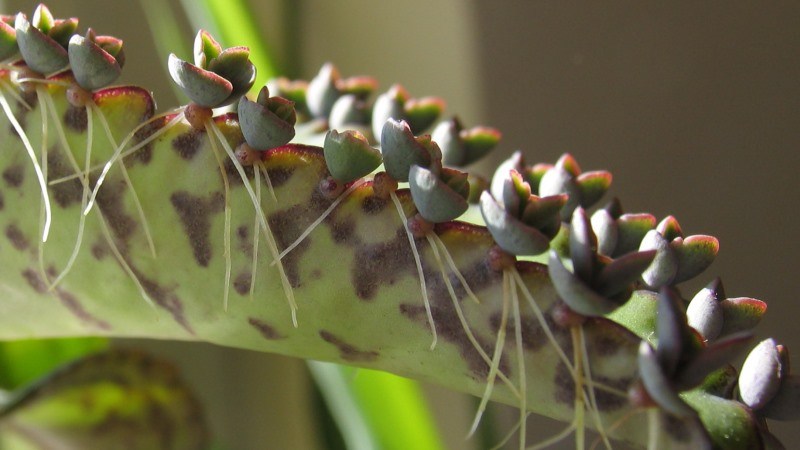
"Children" or brood buds of the pinnate Kalanchoe with developed roots
As a rule, children removed from the mother plant are poured into a hotel "seedling" container and covered with a layer of soil about 1 cm thick. The planting should be watered daily with warm water.
Within a week, 1-2 cuttings grow from each baby, which after a month are transplanted into individual pots.
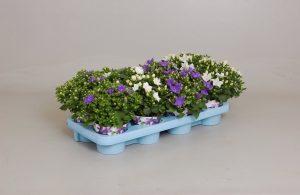
Indoor flower "Bride and groom" or campanula: description, care, reproduction and possible diseases (50 Photos) + Reviews
Kalanchoe species
-
Kalanchoe Blossfeld Kalanchoe blossfeldiana - originally from Madagascar, a low-branched, erect shrub, about 30 cm high, with opposite rounded or oblong leaves, wavy along the edge, about 5-7 cm long. The flowers are small - about 1 cm in diameter, bright red, they look spectacular in inflorescences - umbrellas. Bloom from March to June, very abundant. There are varieties with orange, yellow, etc.flowers.
Kalanchoe Blossfeld
Kalanchoe Blossfeld
Kalanchoe Blossfeld
-
Kalanchoe Blossfeldiana Kalanchoe blossfeldiana ‘Calandiva’ is a very popular cultivar of Blossfeld's terry Kalanchoe, its flowers are multi-petaled, like miniature roses. The color of Kalandiva flowers is very different - white, yellow, pink, red. Plants are compact, abundant flowering.
Kalanchoe Kalandiva
Kalanchoe Kalandiva
Kalanchoe Kalandiva
- Kalanchoe Mangina Kalanchoe manginii - has small leaves up to 3 cm long, obovate, with a serrate edge, sessile oppositely on short petioles. The corolla of the flower is orange-red, fused into a long tube, about 2-2.5 cm long. The flowers are drooping, on long stalks.
- Kalanchoe Degremona Kalanchoe daigremontiana - originally from Madagascar, about 50-70 cm high. A plant with narrow ovate fleshy leaves (elongated triangle shape), up to 15-20 centimeters long, grayish-green in color, with purple spots on the back. In the depressions along the jagged edge, numerous children are formed, which easily fly around and take root. Inflorescence - panicle, flowers about 1.5 cm in diameter, pink, blooms in winter.
- Kalanchoe dissected (lobed) Kalanchoe laciniata - native to Africa and Asia, a perennial herb with erect (lodging in old plants) shoots. The leaves are deeply dissected, with a serrated edge, fleshy, green, shiny. Flowers in few-flowered umbellate inflorescences. Corolla is tubular, short, yellow. The people have the name "Deer Horns".
-
Kalanchoe pinnate Kalanchoe pinnata is a plant with an erect stem, at home it grows up to 80 cm tall. Leaves are opposite, on small petioles, young leaves are almost sessile. Leaves are on average up to 10 cm long, dense, oval in outline with a jagged edge. Very often, "brood" buds are formed between the teeth, from which tiny children grow. The inflorescence is a panicle. In flowers, the sepals are fused into a wide tube up to 3 cm long. The ends of the four petals, also fused at the base and bent at the ends, protrude slightly from it. The flowers themselves are not bright. The tube is green, the ends of the petals are pink. The fruit is a box with small seeds.
Kalanchoe Mangina
Kalanchoe pinnate
Kalanchoe Boveri
- Kalanchoe Boveri Kalanchoe beauverdii - this plant is distinguished by narrow long leaves up to 5 cm long and 3-5 mm wide, smooth from the base along the edge, serrated at the end. With age, the leaves bend in an arc, in the bright sun they acquire a reddish tint, and the shoots are erect at first, but gradually the Kalanchoe takes an ampelous shape. If you do not cut the stems, at home they grow 90-100 cm long. With age, green leaves darken, stems lignify. The flowers are light purple, ringed.
- Kalanchoe Behar Kalanchoe beharensis - originally from Madagascar, a shrub with powerful, little branching shoots. The stem is often bare from below, the leaves are large, oppositely located, in the form of an elongated triangle, with a wavy edge, covered with a grayish waxy bloom. In summer, it blooms with yellow small flowers.
-
Kalanchoe felt Kalanchoe tomentosa - originally from Madagascar, a shrub with erect shoots and pubescent leaves of a silvery-green color and a brown stripe along the edge. Leaves are about 5 cm long, whole or serrate, sessile (without petioles). The inflorescence is a loose ear. The corolla of the flower is tubular, short, white, with a thin dark stripe in the center of the petal on the outside.
Kalanchoe dissected
Kalanchoe Degremona
Kalanchoe felt
Kalanchoe Kalandiva
Kalanchoe Blossfeld variety Kalandiva, the full name of this flower. Differs in lush and long flowering. It does not germinate in nature, he likes only room conditions and human care. This is a completely unpretentious plant. Appearance - a compact bush with thick stems and fleshy leaves. They are colored dark green.They can be both velvety and smooth.
The height of the bush does not exceed thirty centimeters. The advantage is abundant and long-lasting flowering. Small flowers are collected in inflorescences. The color of which is varied. All shades of pink, red, salmon and yellow are found. But the Kalanchoe Kalandiva mix looks especially exquisite. Kalandiva mix is a mixture of colors with different colors. The flowering period lasts about six months. From January to July. When flowering ends, the resting phase begins.

